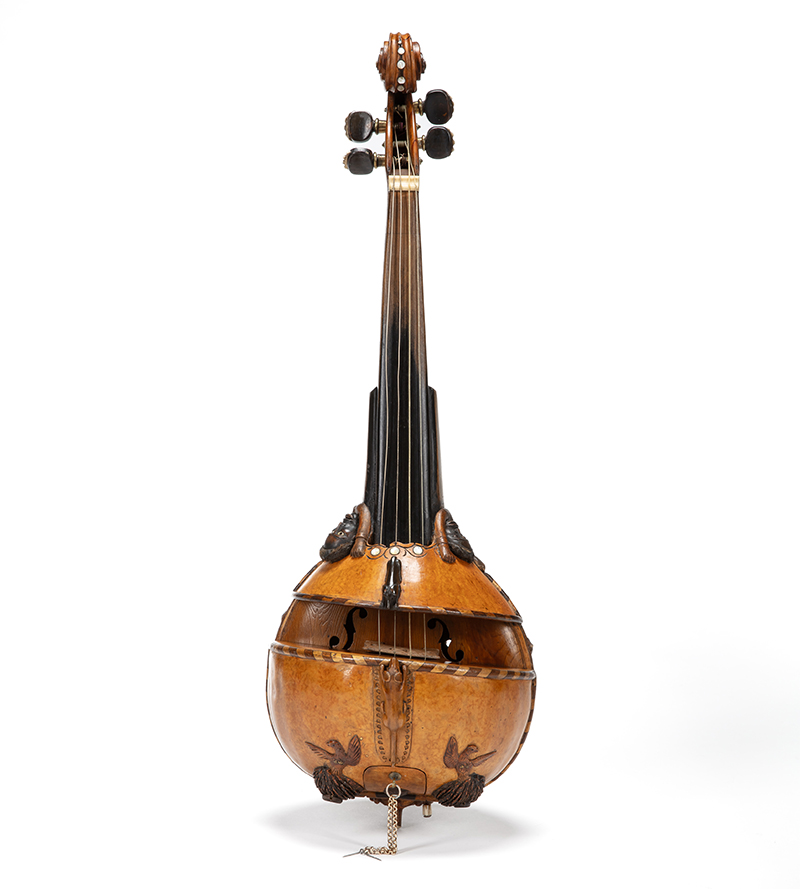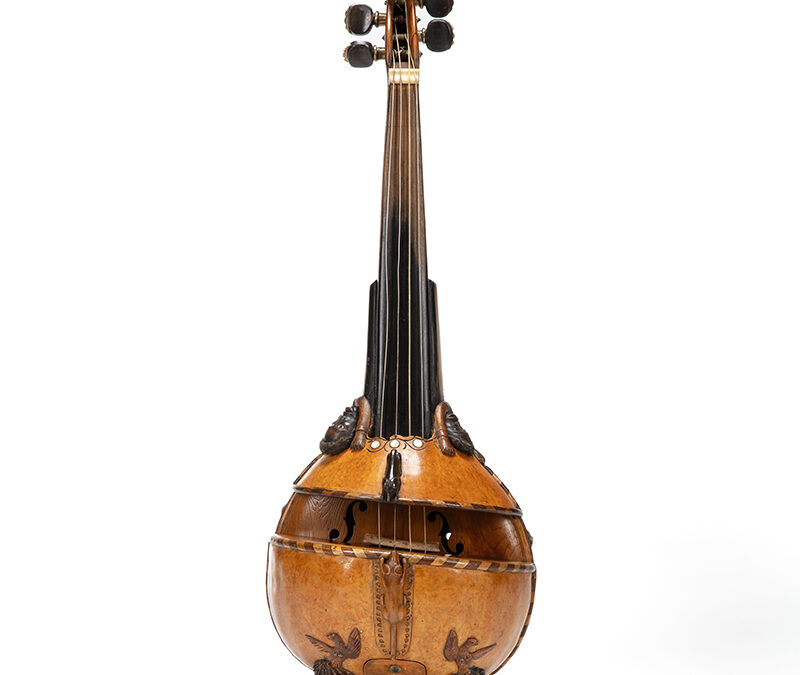Gourd Fiddle

| Maker | James Russell Cluxton |
| Date of Creation | c. 1860 |
| Location | Sardinia, Ohio |
| Materials | Gourd, wood, bone, mother-of-pearl |
| Institution | National Music Museum |
| Credit Line | Gift of Barbara A. Baskin, 2023 |
| Accession Number | NMM 15734 |
| Photo Credit | National Music Museum/Byron Pillow |
Gourd fiddles were instruments that combined the West African tradition of making stringed instruments out of gourds with the four-stringed bowed violin of Europe. Most examples would have had skin tops, tacked to the gourd body as in a banjo, but this example made by James Russell Cluxton features a carved top, along with other carved decoration. Cluxton was a white man who lived in Sardinia, OH, just over 20 miles from Ripley, OH, a major site on the Ohio River where residents assisted fleeing enslaved people who swam across the river from Kentucky, as part of the Underground Railroad. He had family members who were involved in the Underground Railroad. According to family tradition of the maker, the fiddle was intended as an allegory for the Underground Railroad. The slot where the bow passed through the gourd to contact the strings represented the Ohio River. The bridge of the instrument was in essence a bridge to freedom. On the side toward the neck of the fiddle, two distressed Black faces with arms extended upward are carved on each side of the fingerboard. The area adjacent to the string slot features a crouching black dog, representing slave catchers and bondage. Across the string slot, a crouching natural wood-colored dog represents the Underground Railroad and freedom. Two eagles, symbols of the Union, hold walnut shells, which may represent wisdom and clarity. The fiddle is preserved with its original display stand, which is in the form of an abstract figure of natural wood color with two boots, his head flanked with two additional walnut shells. Hidden inside a compartment at the bottom of the instrument is the tailpiece, which is carved with relief of a natural wood and white bone faces, perhaps representing the hidden nature of those who were Conductors or Agents on the Underground Railroad.

